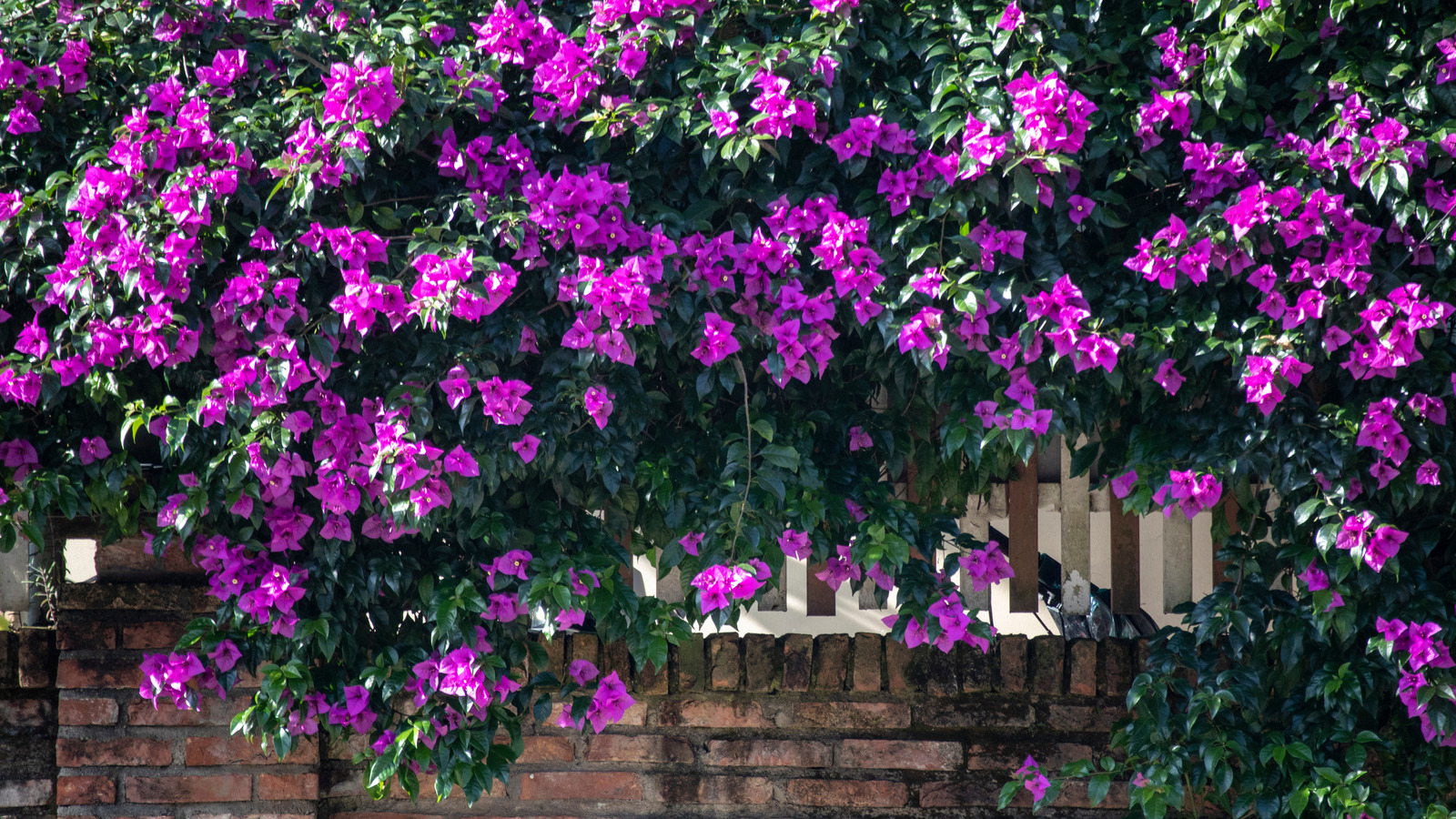
Bougainvillea are summer-loving plants. These showstopping climbers thrive in the heat of tropical and sub-tropical temperatures, winding their way over pergolas and porches, surrounding them with subtle fragrance and vibrant color. They are the perfect pick if you want to bring vacation vibes to your yard.
But their fondness for warmth means they don’t like it when temperatures drop and are particularly vulnerable to frost and rain. So getting your beautiful bougainvillea through winter and flowering again the following year can take some extra care.
To help ensure that your summertime star brings bright bursts of pinks, reds, purples and orange, our experts have advice on how to care for bougainvillea and protect it over winter and to ensure that, as it lies dormant, it doesn’t succumb to the cold.
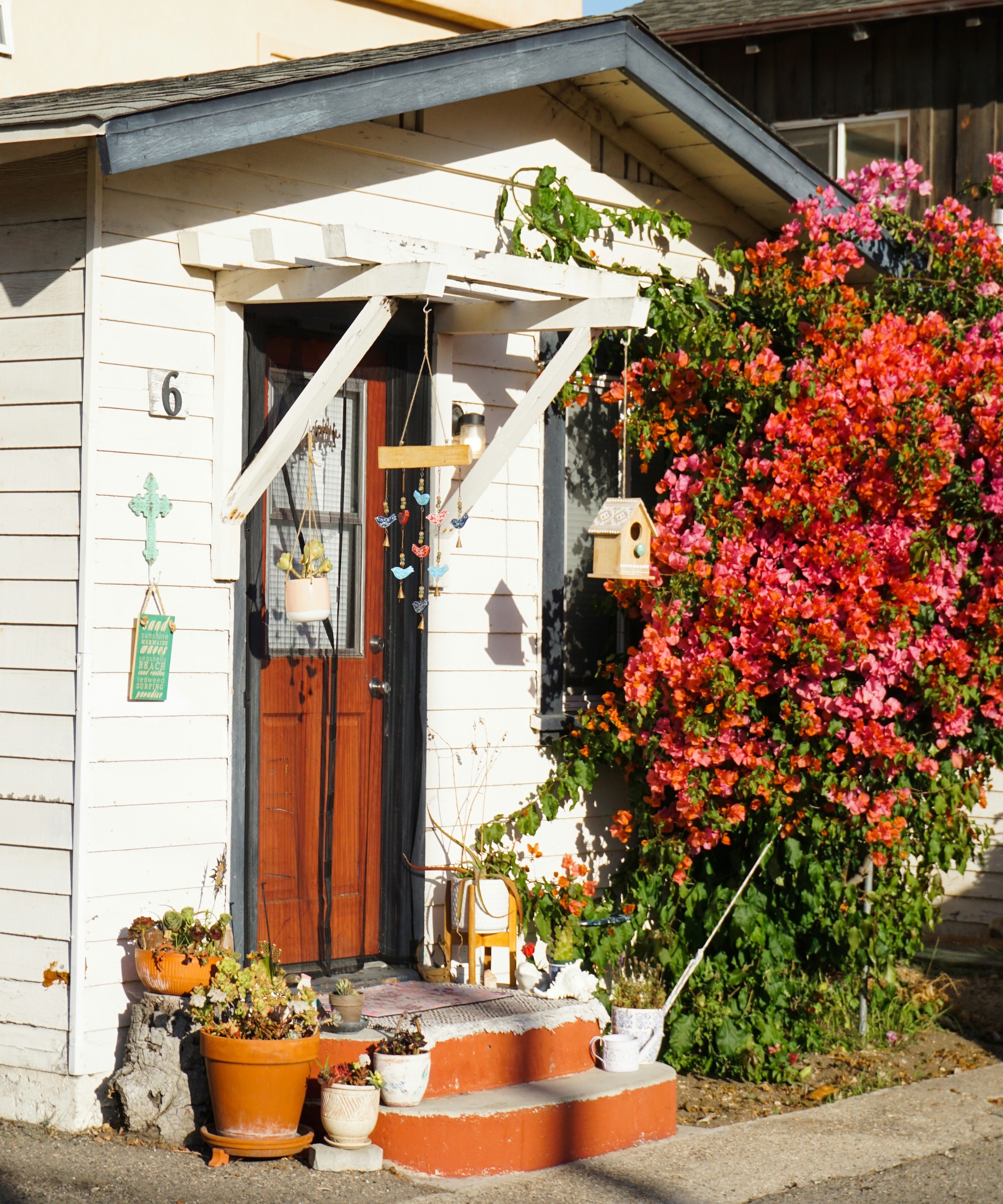
Ideal growing conditions for bougainvilleas
These ornamental vines are part of a family of plants known as the Four O’Clocks (Nyctaginaceae) because they tend to open later in the day.
They are native to Central and South American countries including Brazil, Bolivia, Paraguay, Peru and Argentina. In the US, they flourish in the warmer southern states. You can start surrounding your home and yard with color with a bougainvillea vine on a trellis from Walmart.
‘Bougainvilleas grow well in southern Florida where climatic conditions rarely drop below 25°F and are best suited in arid environments with well-drained soil,’ says landscape designer John Haryasz.
‘Bougainvilleas grow in USDA zones 9 to 11. Positioning them in full sunlight is ideal as it leads to the formation of their beautiful bracts.’
To keep it blooming in abundance in the summer months, here are the steps you need to follow.
1. Prune bougainvillea in late winter
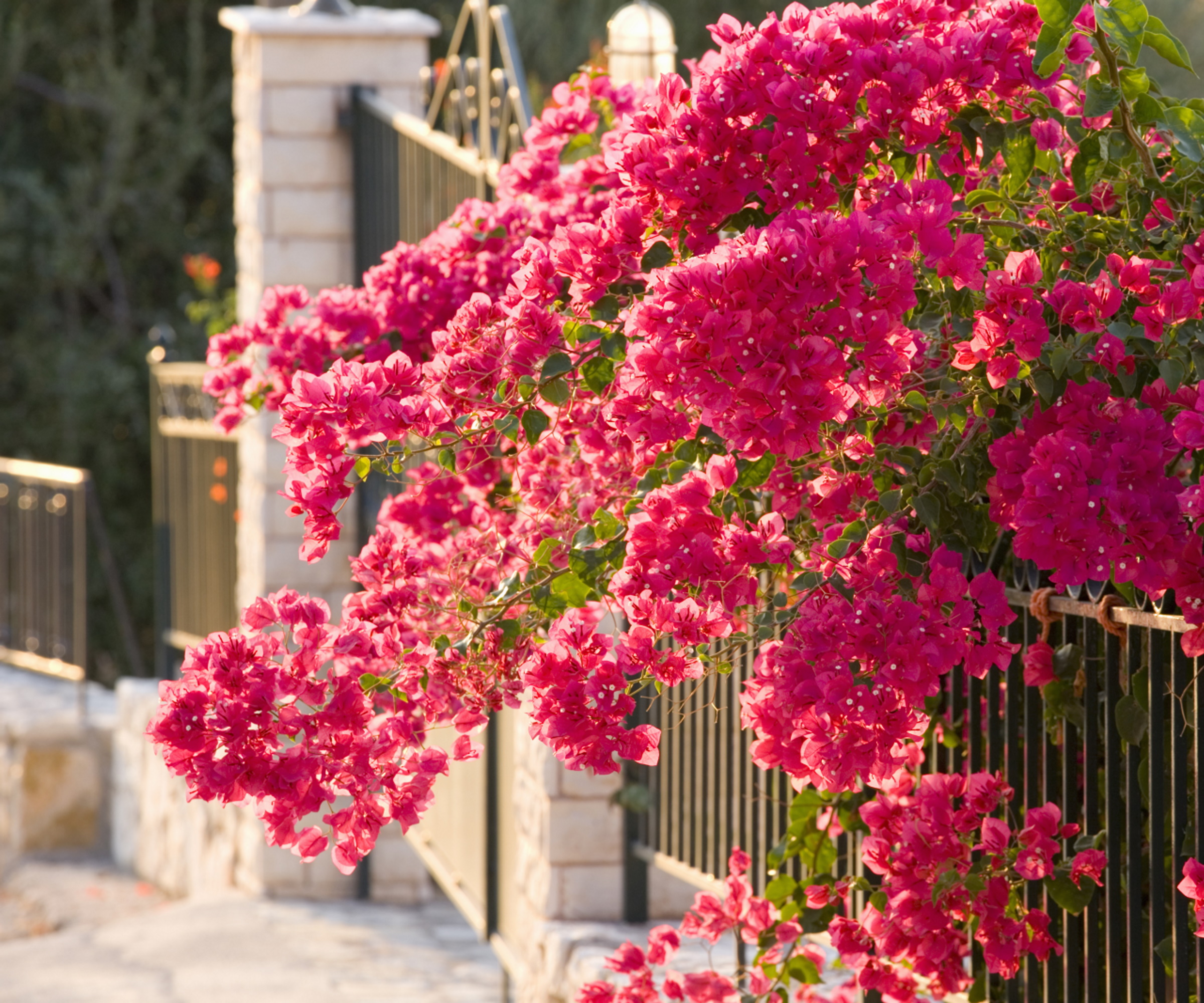
After the summer is over and the colorful bracts that surround the flower at the centre droop and drop, you can tidy the bougainvillea by trimming away dead and weak-looking stems. A heavier pruning should wait until late winter, however.
‘The prime time to prune is just before the growing season kicks off,’ says David Miller, an experienced arborist. ‘Cut back any leggy growth and thin out dense areas to improve airflow and sunlight penetration.
'Focus on maintaining its natural arching form while removing damaged or dead wood. Regular pruning not only keeps it healthy but also encourages lush growth and more blooms come spring.’
Keep your bougainvillea in check and looking healthy with tools like the steel-bladed Nevlers anvil garden shears from Target.
2. Keep plants warm when temperatures dip
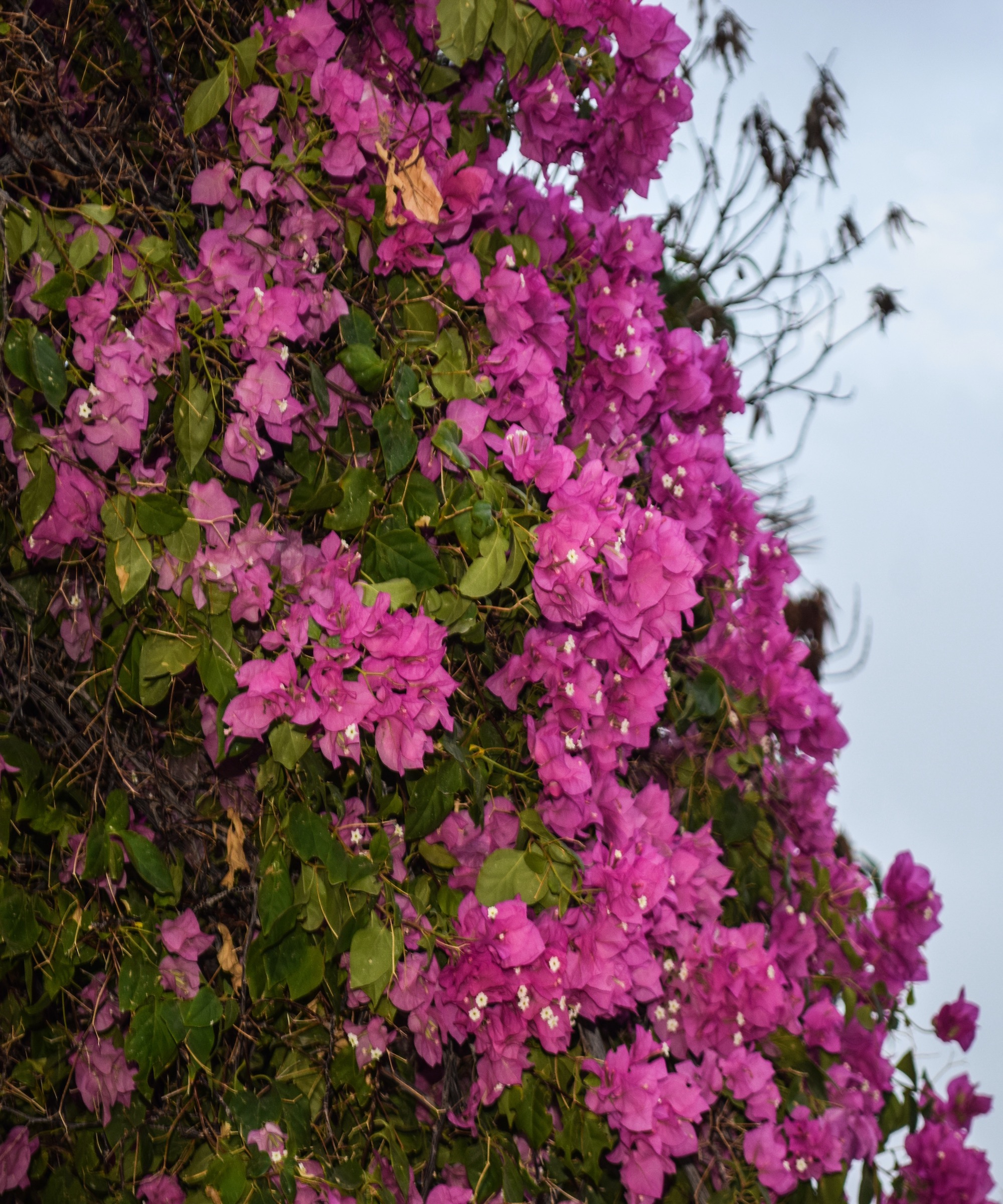
Bougainvilleas aren’t built for icy weather, they prefer warm, frost-free climates. However, with a little preparation, they can be coaxed into surviving cooler zones,’ says David Millar.
‘Temperatures below 30°F can be a deal breaker, causing leaf drop and even damaging the roots, so in regions where winters are icy you’ll need a plan to keep it cozy.’
If your bougainvillea has been grown in a container, the key to its survival is moving it indoors to a space like a greenhouse or garage. Keep it by a window so it can soak up the winter sun.
To keep planted vines warm you can cover the roots with a blanket of organic matter such as grass clippings, leaves, straw or shredded bark.
'Applying a thick layer of mulch – about 4 to 6 inches – around the base of the plant works wonders to protect the roots from freezing,’ says David.
‘If frost is in the forecast, cover your bougainvillea with frost cloth or burlap. Make sure the covering doesn’t touch the plant directly as frost can transfer through the material and nip at the leaves.’
Cover up your cold-hating plants and shrubs with a spun-bond frost blanket from Lowe's.
3. Reduce watering in winter
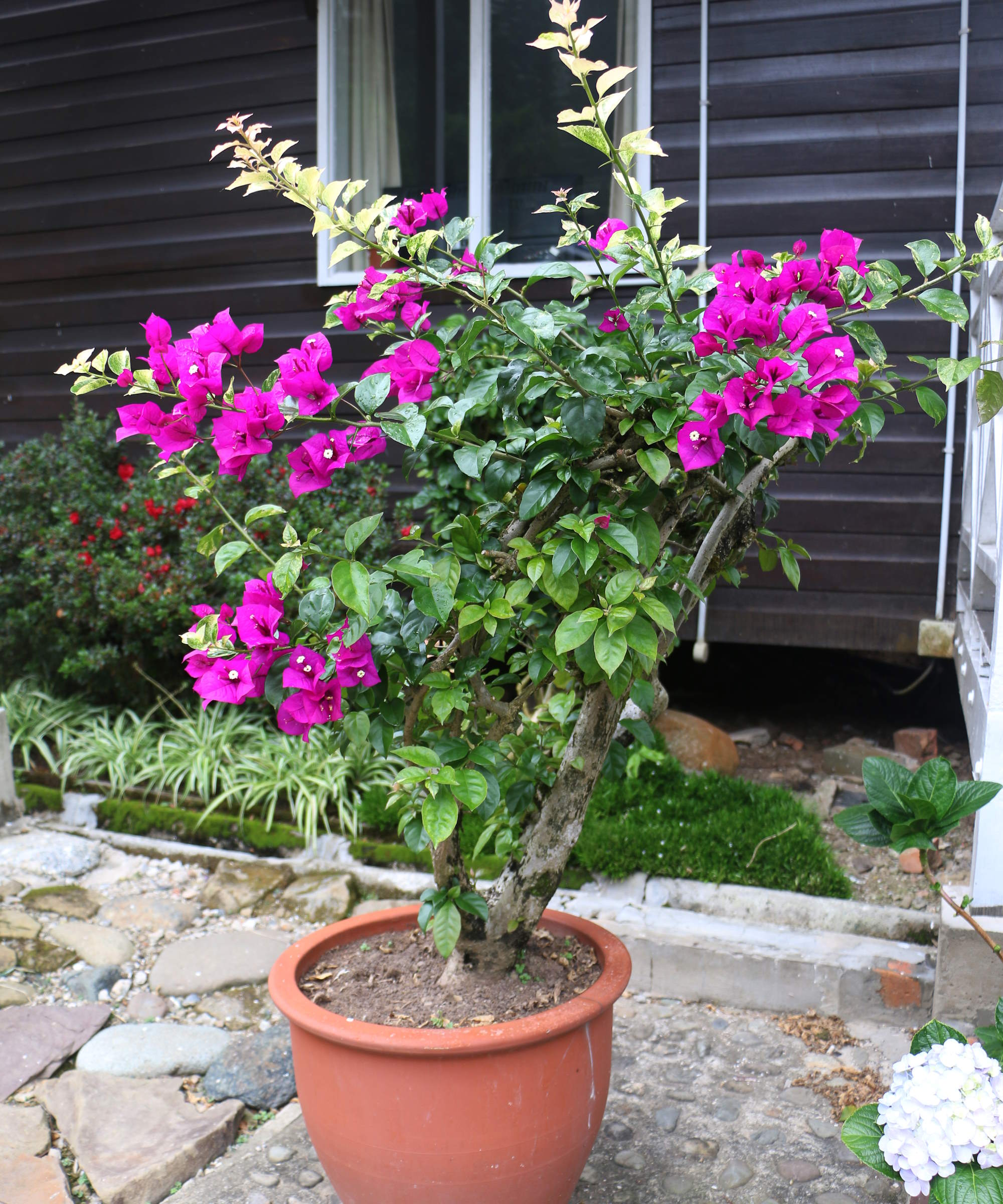
In milder climates where there is less risk of frost, be careful to avoid overwatering as this could lead to root rot.
Bougainvillea hates sitting in soggy soil, especially in winter when it’s not actively growing. Water sparingly; this plant is happier being a little thirsty than having wet feet.
You can improve drainage in your soil by adding compost, mulch or sand to break it up.
4. Keep the critters away
Pests like aphids and mealybugs love a weakened plant, so keep an eye out and treat infestations early with something gentle. You can eliminate threats to your climber with an eco-friendly plant spray made from Harris neem oil from Amazon.
Insecticidal soap can also be used to wash away spider mites and whiteflies that can suck the life out of bougainvillea leaves and damage the plants.
5. Feed it carefully
Be cautious about attempting to boost your climber with additional nutrients during the time it's lying dormant as it could have the opposite effect, warns David.
‘Bougainvillea despises being over-fertilized in winter. Excess nutrients can encourage weak, spindly growth that’s vulnerable to the cold.
‘Feed sparingly during this time, using a balanced fertilizer in early spring to kickstart the growing season,’ he says.
If you live in a hot spot with low rainfall, your climbers can still thrive and cover your outdoor structures in lush flowers. Follow our guide to the best drought-tolerant climbing vines to plant that will bask in the heat.







